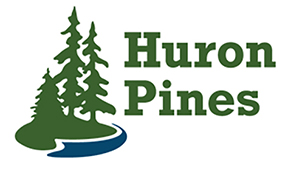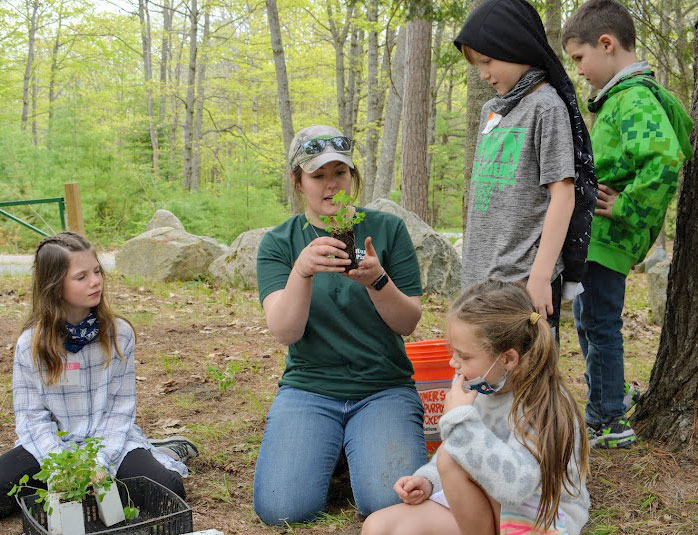NORTHERN MICHIGAN – When students gain a deeper understanding of the natural resources in the places they live and have connections to, it sets the groundwork for lifelong stewardship.
This is the goal of place-based stewardship education — the lessons students learn in their classroom are applied directly to their community through immersive stewardship activities. Giving students ownership to drive projects and have a direct and positive impact on their environment strengthens their sense of place and responsibility for their community’s natural resources now and into the future.
In communities across its 12-county service area, which includes Roscommon, Crawford, Oscoda Ogemaw and Iosco counties, Huron Pines works closely with K-12 students on a variety of place-based stewardship education efforts tailored to their landscape.
At Au Gres-Sims Schools, on the Lake Huron coast in Arenac County, students learn the importance of water quality and native-plant conservation through partnerships with Huron Pines and Northeast Michigan Great Lakes Stewardship Initiative (NEMIGLSI). They’ve applied that knowledge through several on-the-ground projects, including operating a native plant greenhouse and installing rain gardens on school grounds, leading a community stormwater visioning meeting, designing and installing a bioswale at Au Gres Riverside Park, and monitoring populations of threatened Pitcher’s thistle plants on Big Charity Island, part of Michigan Islands National Wildlife Refuge, in Saginaw Bay.
At Vanderbilt Area School in Otsego County, students are stewards of the school forest where they’ve established a trail, installed benches and built an outdoor classroom. They’ve also helped establish a forest management plan to guide actions and activities on the land for the next decade.
This May, a hundred students from Alcona Community Schools took a field exploration trip to Huron Pines’ Hubbard Lake Preserve where they learned ways to protect and steward the natural assets found on the hilly, forested property. Students participated in a series of interactive stations covering topics related to native plants, forest invasive species, nature journaling and observation techniques, and ways in which individual actions can impact natural resources and biodiversity on a larger scale. Part of their hands-on learning involved planting native plants and shrubs at the preserve.
“Place-based stewardship education is a way to create meaningful experiences for students, teachers and administrators in the outdoors,” said Abigail Ertel, Community Program Lead for Huron Pines. “Field days supported by our staff help foster deeper connections to natural resources and public spaces in and around a student’s community, and the empowerment that comes with students driving their own projects can make a big impact on their learning.”

Dan O’Connor is a board member of Huron Pines and superintendent of Alcona Community Schools, whose campus is minutes away from Lake Huron and the Huron-Manistee National Forest. He sees place-based stewardship education as an opportunity for his students to appreciate and take ownership of the places they live.
“We want our students to engage in our community and the natural resources we have here in rural Northern Michigan,” he said. “Our students are only limited by their experiences. I do my best to make sure my teachers and students don’t miss any opportunity.”
Jennifer Schroeder is one of those teachers. The K-5 science teacher and facilitator routinely partners with Huron Pines and NEMIGLSI and has most recently been utilizing Alcona’s 43-acre school forest for lessons in biodiversity. For the last several months, fourth-grade students have had motion-sensitive trail cameras set at different locations to study mammal diversity on the property.
“We’ve found 10 different species of mammals including deer, bobcats, coyotes and foxes,” she said, noting most animals were seen in a wetland area versus an all-birch forest. “Students are making the connection that plant diversity leads to mammal diversity. Place-based stewardship education connects them to their community and immerses them in real-world science and it’s quite heartwarming to watch them develop ownership of their school forest.”
Students spending more time outdoors learning about their own community — that’s something worth getting behind.
— Chris Engle is Communications Associate for Huron Pines. Huron Pines strives to improve economic, environmental, educational and recreational opportunities throughout Northern Michigan. Learn more at huronpines.org.


